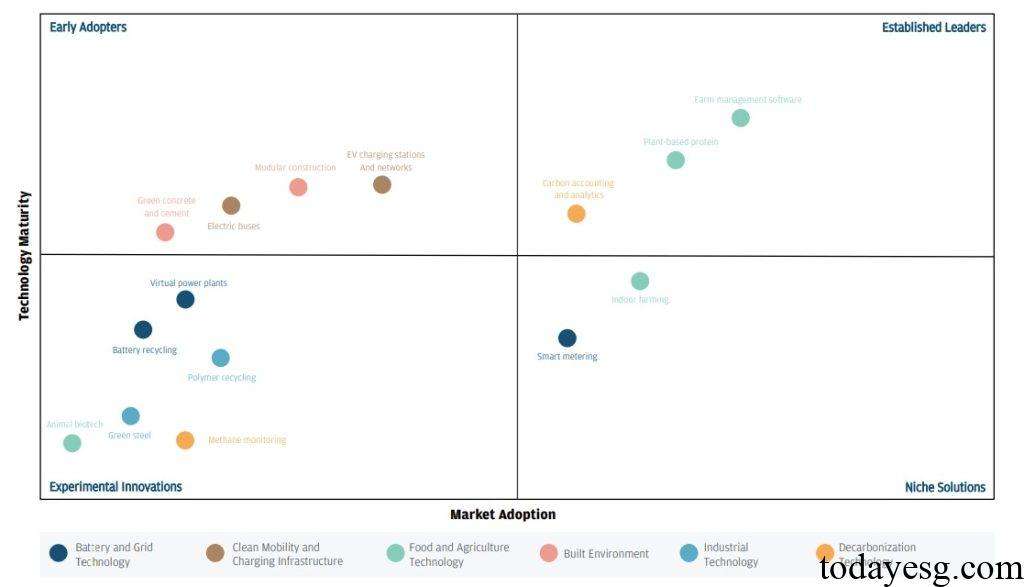Report on Climate Technology Industry Development
J.P. Morgan releases a report on the development of the climate technology industry, aimed at summarizing the status and future trends of global climate technology applications.
J.P. Morgan believes that climate technology is an important part of driving the transition to a low-carbon economy. It can reduce carbon emissions through innovation, address climate change, and promote sustainable development.
Related Post: Moody’s Releases Global Climate Investment Report
Classification of Climate Technology Industry
J.P. Morgan believes that climate technology refers to solutions related to climate change mitigation or adaptation. The scale of climate technology venture capital in the United States in 2023 is $41.9 billion, and it is expected to be $26.2 billion in 2024. Climate technology can be divided into the following categories:
- Battery and grid technology: battery production and recycling, grid technology, and battery management systems. In this category, battery production (43%) and lithium mining (28%) have a relatively high proportion, and startups focused on battery production have received 35% of investments in the past decade. With the development of the electric vehicle industry, the attention to this field continues to increase.
- Clean mobility and charging infrastructure: electric vehicle charging, and clean energy equipment manufacturing, shared mobility. The proportion of clean travel equipment manufacturers is the highest, reaching 70%, and it is expected that the investment scale in this field will be 5.8 billion US dollars by 2024. To support clean travel solutions, charging infrastructure is also rapidly developing.
- Food and agriculture technology: indoor agriculture, agricultural biology, and precision agriculture. It is expected that the investment in this field will be 9.8 billion US dollars by 2024. These solutions can reduce agricultural production costs and improve sustainability.
- Built environment: smart buildings, green buildings, and construction waste management. Intelligent buildings are the category with the highest investment share, reaching 47%. Many startups are using data to improve building energy efficiency and introducing sustainable materials with lower carbon density to reduce building carbon emissions.
- Industrial technology: green manufacturing, green chemistry, and circular economy. The market’s focus on sustainable products has led to rapid development of sustainable packaging, reuse, and recycling technologies.
- Decarbonization technology: carbon emission tracking and analysis, climate data services. This field adapts to climate change by measuring carbon emissions and other environmental data.
Classification and Development of Climate Technologies
Different climate technologies have differences in technological maturity and market adoption, which are directly related to factors such as regulatory policies, consumer preferences, and technology costs. Based on two categories of technological maturity and market adoption, climate technology can be classified into four different categories, including:
- Early Adopters: Green buildings, electric vehicles.
- Experimental Innovations: Green Steel, methane monitoring, battery recycling.
- Established Leaders: carbon emissions accounting, plant protein.
- Niche Solutions: Smart metering, indoor agriculture.

In the development of climate technology, some factors may have significant impacts, including:
- Government funding and policies: Government funding and policies can support climate technology innovation and help businesses gain market share.
- Environmental regulations: Environmental regulations may affect the application of climate technology.
- Technological progress: Technological progress can help expand the scale of climate technology and reduce production costs.
- Public utility costs: The market’s procurement costs for water and electricity resources may change.
Reference:








